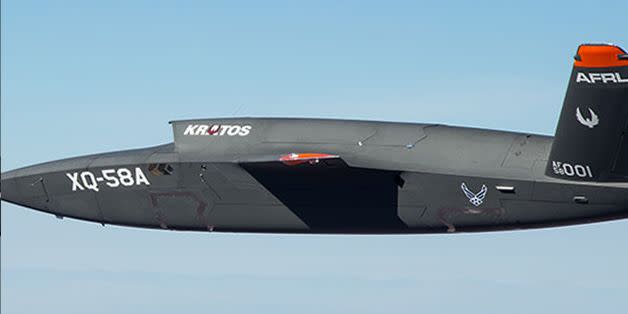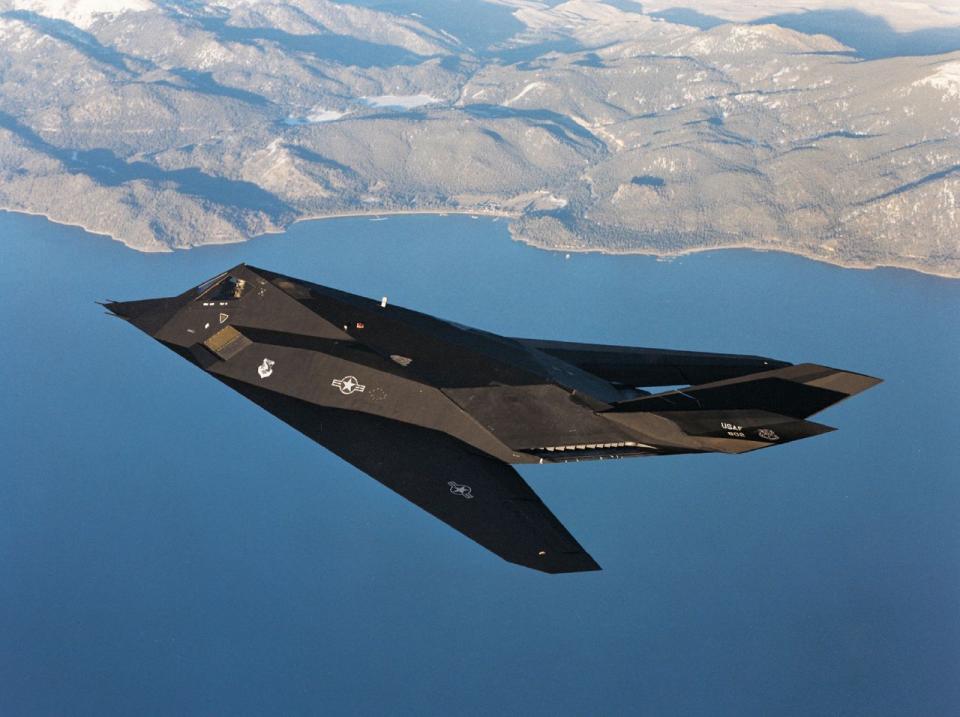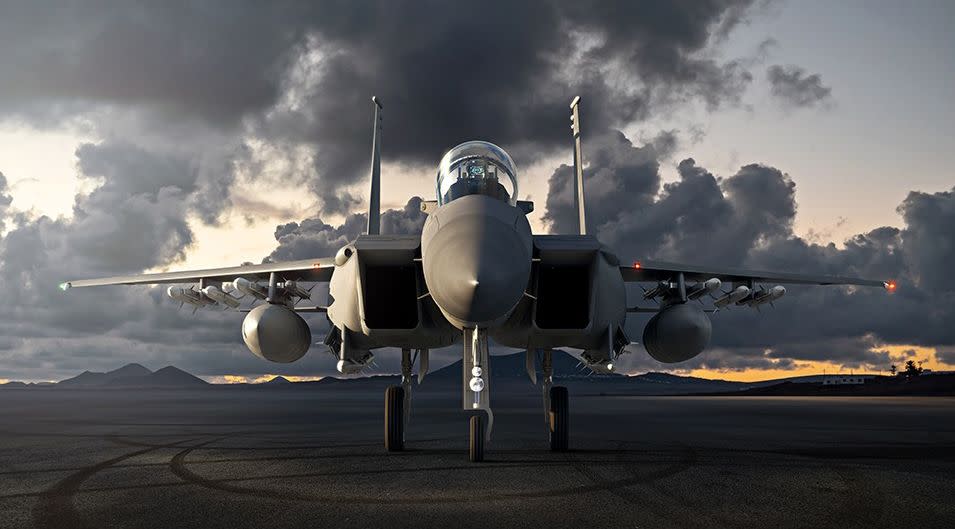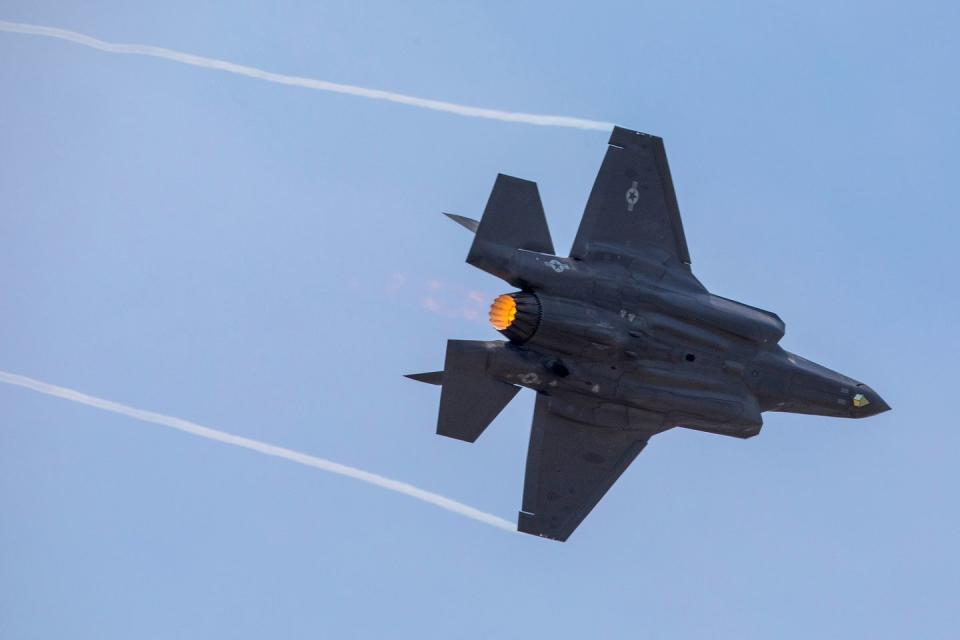This Experimental Drone Could Change America's War Strategy

For nearly 20 years, the United States Air Force has been focused on anti-terror operations in uncontested airspace. Now, as America transitions its focus away from the War on Terror toward potential near-peer conflicts, the U.S. is looking to pull a page out of its own World War II playbook by building inexpensive combat aircraft that can overwhelm advanced enemy air defenses through sheer numbers.
The Kratos XQ-58A Valkyrie, an unmanned and experimental combat aerial vehicle, is tough to spot on radar and could be directly linked to the F-35 through an encrypted data connection to serve as a wingman under the pilot’s control. But even with these pros, it’s the cost of the Valkyrie, not its capabilities, that could change America’s aerial warfighting strategy.

While there’s no question the U.S. boasts the largest air force in the world in terms of total military aircraft, the makeup and size of that force has shifted dramatically since the final days of World War II. At that time, the U.S. boasted some 300,000 combat aircraft. Today, the nation has only around 13,400, spread out across its various military branches.
The reason for this change is the steady progress of technology, which has dramatically increased the combat capabilities and the cost of each aircraft in service today. These parallel developments in aviation production have resulted not only in a leaner, more capable Air Force, but a change in combat strategy altogether. Gone is the World War II mindset that called for superiority through volume. On today’s battlefield, it’s technology, not numbers, that makes the biggest difference.
But the capability gap offered by technology alone is difficult to maintain. As near-peer level opponents like China and Russia field more advanced air defense systems, America’s aircraft face the possibility of a more contested battle space than ever before. With American fighters costing upward of $80 million each, regardless of whether or not they possess stealth capabilities, each and every loss would be truly felt in a large-scale conflict. That’s why the strategic scales may be tipping back toward a force reliant on a high volume of aircraft, rather than the amount of tech that can be crammed into each one. And that’s where the Kratos XQ-58A Valkyrie could really shine.

The Valkyrie has an internal weapon payload capacity of at least two small-diameter bombs and boasts a flight range of more than 2,000 miles, but more importantly, the Department of Defense (DoD) has a plan to connect these unmanned combat air vehicles (UCAVs) to F-35s and the new F-15EXs via encrypted data links to serve as support drones—an initiative known as the Skyborg program. These links, coupled with on-board artificial intelligence, will allow pilots of manned aircraft to control their drone wingmen, even sending them out ahead to relay sensor information back to the pilot.
That means the Valkyries would be able to engage ground targets on behalf of a manned fighter and potentially even sacrifice themselves to protect manned aircraft from inbound missiles.
“We can take risks with some systems to keep others safer,” Will Roper, Ph.D., assistant secretary of the Air Force for acquisition, technology, and logistics, told Defense News reporter Valerie Insinna last year.
Currently, combat aircraft rely on their own sensor suites to identify targets and potential threats, but with the Skyborg Program, unmanned aircraft could fly ahead to spot targets and relay data back to pilots. That would allow fighters to engage threats from further distances or avoid them all together.
“In the future, we can separate them out, put sensors ahead of shooters, put our manned systems behind the unmanned. There’s a whole playbook,” Roper told Defense News.
All that capability comes with the tiny price tag (for jet-powered combat aircraft) of around $2 million per plane. Considering Raytheon’s single-use Tomahawk cruise missiles ring in at an estimated $1.4 million each and combat drones like the RQ-4 Global Hawk cost over $120 million apiece, $2 million for a reusable combat aircraft like the Valkyrie’s is a steal.
The Valkyrie’s low price tag lands it squarely within the DoD’s “attritable aircraft” concept—planes that are so cheap to replace that commanders can take greater risks with them without fearing their loss as much as they would a manned platform or even a high-dollar drone. As Kratos points out, the Valkyrie also offers “open architecture” that allows them to modify the aircraft to suit different mission requirements with different payload options. This dramatically increases the number of mission types these drones can support, including air-to-air and air-to-ground engagements.
A shift toward producing a large number of these “attritable” platforms could offer a huge boost in America’s air power capabilities by returning to overwhelming force through volume. That’s important, because despite how advanced air defense systems have become, they still have a limited magazine. By using drone swarms, the U.S. hopes to overwhelm defensive systems, which is a big part of why the Air Force is emphasizing the “attritable” part of its drone program.
"Swarming allows you to build large numbers of low-cost expendable agents that can be used to overwhelm an adversary," Paul Scharre, from the Center for a New American Security think tank, told BBC News’ Thomas McMullan last year. "This reverses the long trend of rising aircraft costs and reducing quantities.”
Unlike in the days of World War II, however, the value of all those aircraft can be bolstered further by the advanced data collection and leveraging capabilities of flying supercomputers like Lockheed Martin’s F-35 Joint Strike Fighter.

A decision on whether the Pentagon wants to move forward with mass production of the Valkyrie is expected to come as soon as 2021. (Since it’s a new platform that’s still in testing, there’s always the chance that new problems will emerge.) But regardless of that decision, it looks as though the future of air superiority will likely look an awful lot like this new Kratos drone.
As air defenses continue to mature, stealth won’t be enough to dominate the airspace above a battle, and that’s where old fashioned arithmetic may be the only route to victory. By sending more low-cost and unmanned aircraft at a target than the surrounding defenses can effectively engage, Skyborg drones can assure victory even when stealth can’t get the job done.
With both Russia and China reportedly developing their own “wingman” drones, the wars of the future may well be won through overwhelming air defense systems with swarms of armed UCAVs taking their cues from nearby human pilots.
You Might Also Like

